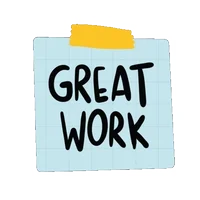Lisa, my former colleague, joined a company as a marketing manager, expecting a culture of innovation and creativity. Instead, she found a micromanaging boss and disengaged colleagues. She was unhappy and wanted to quit. Then, she participated in a project collaboration with employees from different departments, where she had autonomy, support, feedback, and recognition. She felt valued and empowered and contributed to a successful new product line.

If you want to have a team of motivated employees like Lisa, that are both engaged in their work tasks as well as inspired and driven to do the best they can within your company, then understanding how effective workflow processes can lead to greater employee engagement is paramount. In this blog post, we’ll discuss various strategies for fostering meaningful workplace connections between colleagues, increasing collaboration between teams and departments, and improving overall progress toward achieving organizational objectives. keep reading!
Employee recognition
A company’s success relies heavily on the productivity of its employees. That’s why it’s important for management to provide recognition and show appreciation for the hard work and effort their employees put in day after day.
Recognizing the effort and showing appreciation can boost morale and motivation, leading to a happier workplace and ultimately, better results. From verbal affirmations to bonuses or even just a simple thank you note, every gesture counts. When employees feel valued and appreciated, they are often more willing to go the extra mile to ensure the success of the company.
Performance rewards
Incentivizing employees is an excellent way to boost morale and encourage them to go above and beyond their job duties. Offering rewards is a fabulous way to recognize and show appreciation for outstanding performance or team accomplishments. A simple gesture of recognition can mean a lot and motivate employees to achieve more.
A well-thought-out reward program can go a long way to make a positive change in the workplace. From gift cards to paid time off or bonuses, the options for rewards are endless. A culture that celebrates accomplishments and recognizes employees for their hard work is more likely to retain top talent and increase productivity. Show your employees that you care and appreciate their hard work with rewards for their exceptional job performances.

Professional development
In today’s fast-paced work environment, it’s essential to keep honing the skills. That’s why we believe offering employees opportunities for professional development can motivate and engage them. This can be done through workshops, seminars, classes, mentorship, job shadowing, or on-the-job training.
Professional development can help employees learn new skills, expand their knowledge, advance their careers, and increase their confidence, satisfaction, and loyalty to the organization. By investing in the growth and development of their employees, organizations can benefit from improved performance, productivity, and innovation.
Team-building activities
Building a strong team is essential for the success of any company. That’s why it’s important to facilitate team-building activities and company outings. These events are not only a chance to have fun outside the office, but they also promote camaraderie among colleagues. Getting to know your coworkers on a personal level enables better communication, more effective collaboration, and an overall better work environment.
Whether it’s a happy hour, a team building exercise, or a company retreat, the benefits of spending time together outside of work are clear. So next time you’re planning an event for your company, keep in mind the positive impact it can have on the team’s dynamic.

Open communication
Open communication and feedback are critical components of any successful organization. When employees feel comfortable sharing their ideas and opinions, it creates a collaborative environment that fosters teamwork and creativity. Encouraging open communication and feedback not only allows for the exchange of innovative ideas, but it also empowers employees to take ownership of their work and feel more invested in the success of the company.
Additionally, feedback can open up avenues for growth and improvement, both for individual employees and the organization as a whole. By prioritizing open communication and feedback, companies can create a culture of transparency and trust, fostering a healthy and productive workplace.
Comfortable workplace
Creating a work environment that inspires creativity and motivation is key to a productive workplace. And what better way to do that than by adding in some thoughtful touches to make the space more comfortable and enjoyable? Imagine working in a space that’s filled with lush greenery, where the calming presence of nature can help ease work-related stress.
Or how about playing some upbeat tunes to get those creative juices flowing? And to top it off, perhaps you can satisfy those mid-day cravings by providing your team with some snacks to fuel their productivity. By adding these small touches to your workspace, you can build a positive atmosphere that will allow your team to thrive and achieve their goals.
Last Word
In conclusion, it is important for company leaders to put employee engagement and motivation as a top priority. Strategies such as offering rewards, team-building activities, professional development, and recognition are key components to provide an uplifting workplace culture that employees appreciate.
Furthermore, providing a safe working environment with open communication, enhanced through non-work related activities and amenities like snacks, plants, music and art can also help create a more enjoyable workspace that will lead to better job satisfaction in the long run. Employees want to feel recognized and acknowledged for their efforts and a great way to increase morale is by ensuring that every worker feels valued through the above-mentioned best practices.
Frequently Asked Questions
When employees are engaged and motivated, they work harder, smarter, and happier. They also stick around longer, delight the customers, and create a positive vibe in the company.
To understand and enhance the employees’ feelings and motivations, one should: survey them, analyze the data to identify their happiness, challenges, and improvement areas, plan and communicate actions with them, execute, monitor, and adjust actions.
In order to lead a team effectively, managers must: share a clear and compelling vision and purpose, give autonomy, support, feedback, and recognition, foster collaboration, learning, and innovation, show appreciation, trust, and respect, and offer flexible work, fair pay, and meaningful rewards.